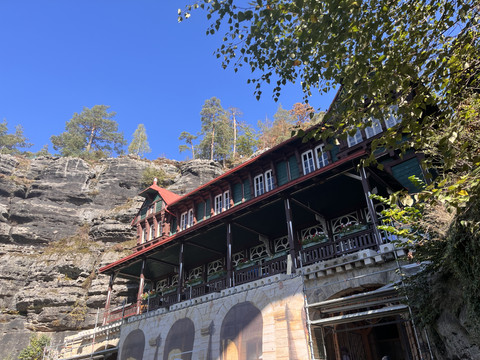Europe's largest sandstone rock gate in the Bohemian Switzerland National Park - accessible on hiking trails from Hřensko or Mezní Louka.
From the adjacent area, there is an unobstructed view of the natural monument. Access is via a managed private area, which is why there is an entrance fee.
In May 1808, Caspar David Friedrich set off on a hike in Bohemian Switzerland. His destination was the Prebischtor area so that he could see the Rosenberg and Kaltenberg mountains up close. He walked for three days and drew four sketches on one sheet of paper. Friedrich had climbed the Winterberg, crossed the Bohemian border and hiked on towards the Prebischtor. This was the usual route of the Fremdenweg at the time.Find out more about Caspar David Friedrich in Saxon Switzerland
Hiking tip
To Prebischtor
